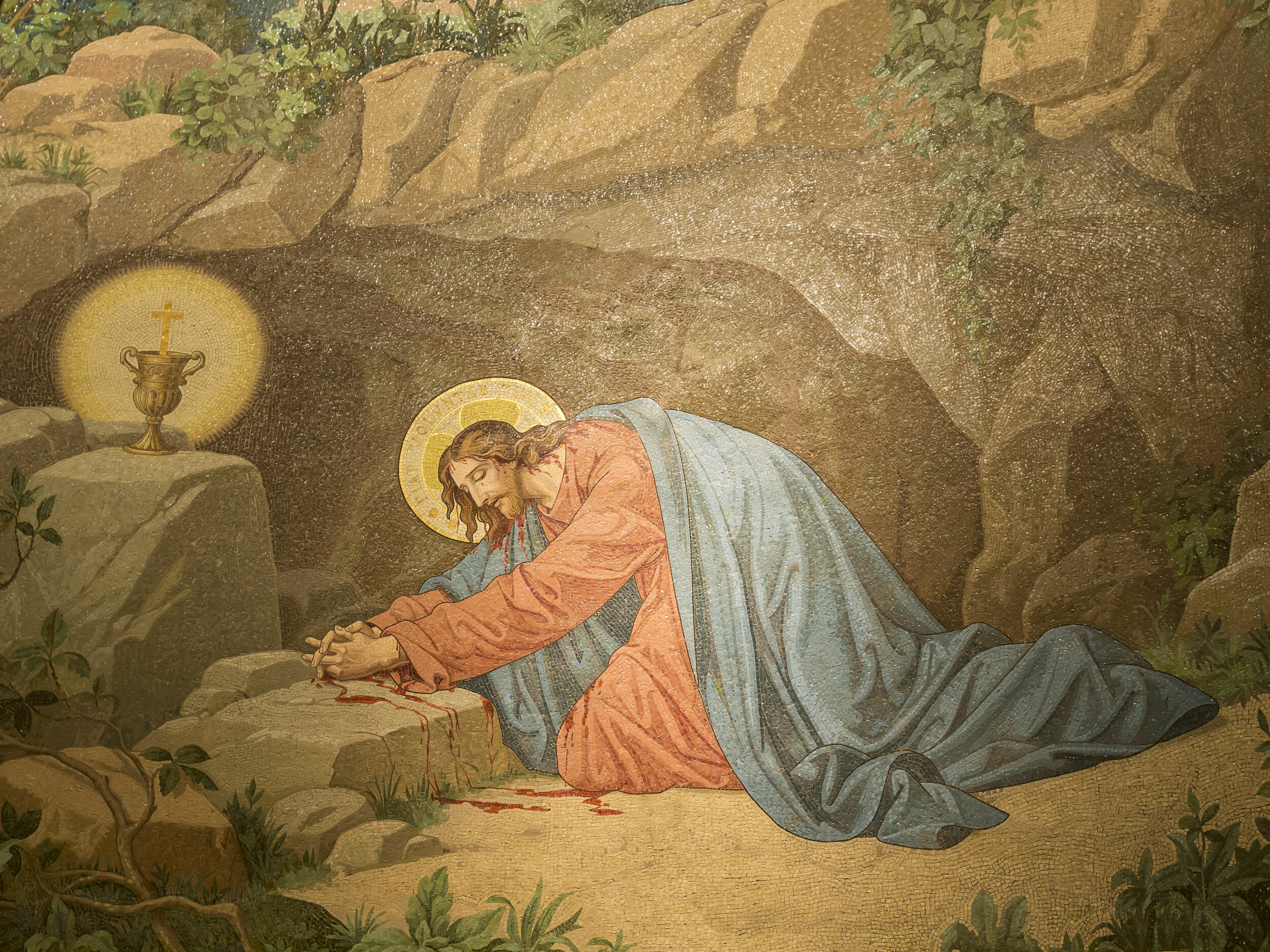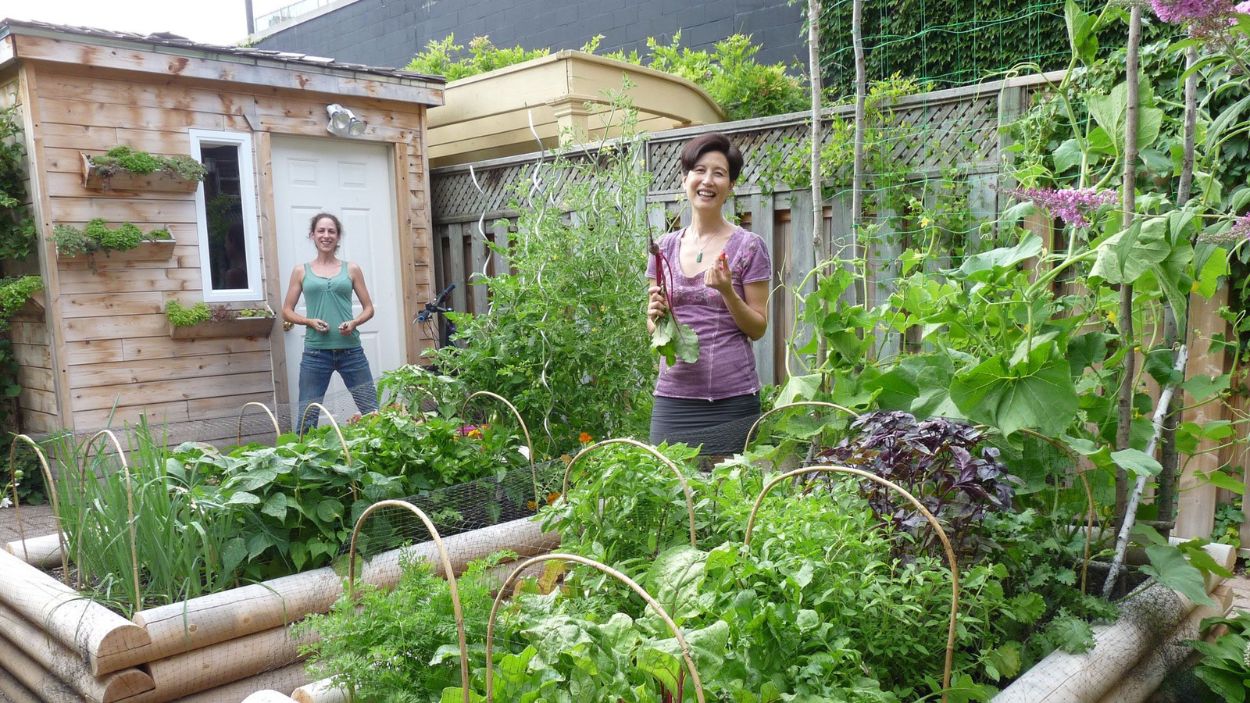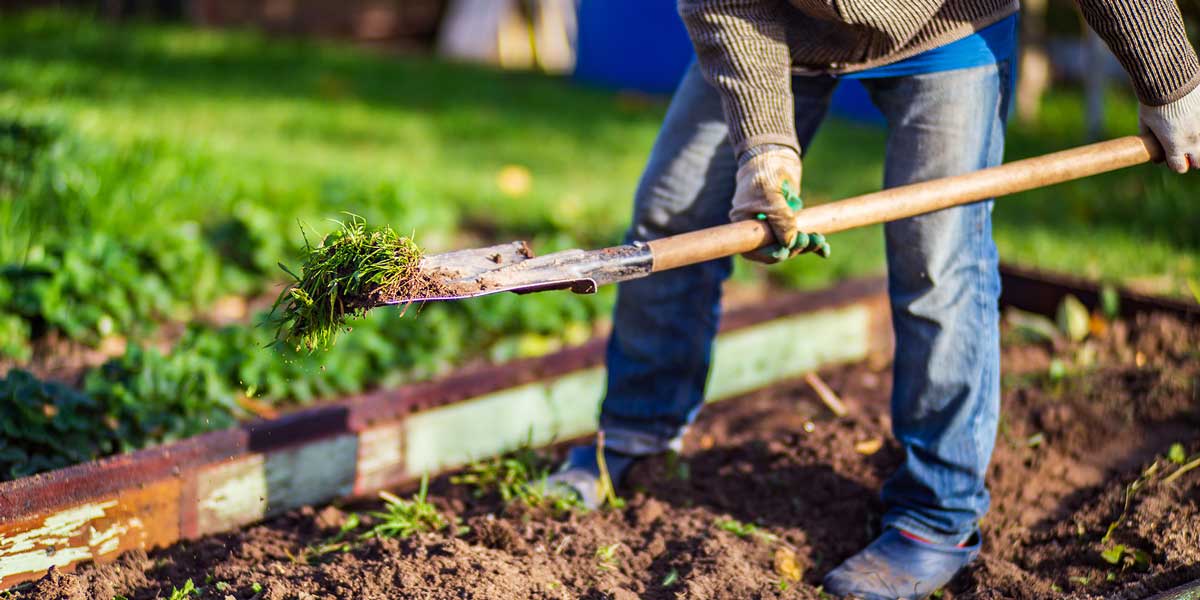

Articles
What Happened In The Garden Of Gethsemane
Modified: January 5, 2024
Discover the unparalleled significance of the Garden of Gethsemane in the realm of gardening, where Jesus experienced immense anguish before His crucifixion.
(Many of the links in this article redirect to a specific reviewed product. Your purchase of these products through affiliate links helps to generate commission for Storables.com, at no extra cost. Learn more)
Introduction
Gardening is not just a hobby; it is an art that allows individuals to connect with nature, cultivate beautiful spaces, and reap the rewards of their labor. Whether you have a small balcony garden or a sprawling backyard, gardening offers numerous benefits for both the body and the mind.
In this comprehensive guide, we will explore the world of gardening, from basic gardening techniques to advanced plant care. We will delve into the joys of growing your own fruits, vegetables, and herbs, as well as the satisfaction of creating stunning flower beds and lush landscapes. As an expert in both gardening and SEO, I will combine my knowledge to provide you with valuable tips and insights to optimize your gardening experience.
From soil preparation to pest control, from choosing the right plants to creating a harmonious garden design, this article will cover it all. We will discuss the fundamentals of gardening, including the importance of sunlight, water, and nutrients for plant growth. Additionally, we will explore different gardening methods such as container gardening, raised bed gardening, and vertical gardening, tailoring the information to suit the needs of both beginners and experienced gardeners.
To successfully grow a garden, it is essential to understand the lifecycle of plants, the significance of pruning and fertilization, and the art of pest management. I will guide you through these elements, sharing practical tips and tricks to help you achieve a thriving and vibrant garden.
Furthermore, gardening is not just about nurturing plants; it is also about creating a sanctuary and a haven for relaxation and rejuvenation. We will discuss how to design your garden to create a peaceful and tranquil atmosphere, incorporating features such as water elements, seating areas, and aromatic plants.
Lastly, we will explore the benefits of gardening for mental and physical wellbeing. Gardening has been proven to reduce stress, improve mood, enhance cognitive function, and even promote physical fitness. By engaging in gardening, you can unlock a range of health benefits while reaping the delicious rewards of your harvest.
So, whether you are a novice gardener looking to dip your hands into the soil for the first time or an experienced horticulturist seeking new ideas and techniques, this article will serve as your comprehensive guide to the world of gardening. Let’s dig in and unlock the secrets to a bountiful and beautiful garden!
Key Takeaways:
- The Garden of Gethsemane is a place of deep significance, teaching us the importance of prayer, spiritual vigilance, and surrendering to God’s will, inspiring us to deepen our faith and trust in divine guidance.
- Jesus’ surrender in the garden exemplifies selflessness, love, and obedience, urging us to emulate his example by surrendering our own wills to God, finding peace, purpose, and transformation in divine alignment.
Read more: What Is Garden Of Gethsemane
The Setting: Garden of Gethsemane
The Garden of Gethsemane holds a significant place in religious history and is an iconic location for Christians around the world. Situated at the foot of the Mount of Olives in Jerusalem, this peaceful garden became the backdrop for one of the most pivotal events in the life of Jesus Christ.
The name “Gethsemane” is derived from the Aramaic word meaning “oil press,” indicating that the area was once used for extracting oil from olives. The garden itself is believed to have been an olive grove, with ancient olive trees still standing today, some dating back over a thousand years. These majestic trees create a serene and contemplative atmosphere, inviting visitors to reflect upon the events that unfolded here.
It was on the eve of his crucifixion that Jesus and his disciples made their way to the Garden of Gethsemane after sharing their last supper together. This location held special significance for Jesus, as it was a place of solace and prayer, away from the hustle and bustle of the city.
As they entered the garden, Jesus instructed his disciples to find a place to sit while he went further into the garden to pray. He took three of his closest disciples, Peter, James, and John, with him and asked them to keep watch while he spoke with his heavenly Father.
It is in these moments of solitude and intense prayer that Jesus experienced a profound internal struggle. Knowing the ordeal he was about to face, he felt overwhelmed with sorrow and anguish. The weight of the world’s sins bore heavily upon him, and he prayed earnestly for God’s will to be done.
In this holy garden, Jesus uttered the famous words, “Father, if it is possible, let this cup pass from me. Yet not as I will, but as you will.” These words signify his acceptance of God’s plan, even in the face of immense suffering.
As Jesus prayed, his distress was so great that he began to sweat drops of blood, a medical condition known as hematidrosis. This physical manifestation of his anguish further emphasizes the intensity of his emotional and spiritual struggle.
Meanwhile, the disciples, overcome by exhaustion and perhaps unaware of the gravity of the situation, fell asleep. Jesus, upon discovering them asleep, gently admonished them, saying, “Could you not watch with me one hour?” It is a poignant reminder of the challenges faced in times of crisis and the importance of steadfast support.
Shortly after, the peacefulness of the garden was shattered when a mob, led by Judas Iscariot, arrived to arrest Jesus. Judas had betrayed Jesus to the authorities by identifying him with a kiss, and this betrayal marks the beginning of the final chapter in Jesus’ life.
The Garden of Gethsemane serves as a powerful reminder of the humanity of Jesus, the depth of his suffering, and his ultimate sacrifice. It is a place of reflection, contemplation, and reverence, where believers can connect with the profound events that took place over two thousand years ago.
Visiting the Garden of Gethsemane today allows pilgrims to walk in the footsteps of Jesus, to stand beneath the ancient olive trees, and to engage with the significance and lessons of that fateful night. It is a place of spiritual significance and a testament to the enduring legacy of Jesus’ life and teachings.
Jesus’ Agony and Prayer
In the Garden of Gethsemane, Jesus experienced both physical and emotional anguish as he confronted the weight of his impending suffering and crucifixion. The depth of his distress is captured in the Gospel accounts of his prayer and conversation with God.
As Jesus entered the garden with his disciples, he confided in them, saying, “My soul is overwhelmed with sorrow to the point of death.” He knew the enormity of the sacrifice he would make and sought solace and strength in prayer.
Leaving most of his disciples behind, Jesus took Peter, James, and John deeper into the garden with him. He asked them to keep watch as he withdrew a short distance to be alone, falling to the ground in an attitude of deep humility and submission to God.
In this moment, Jesus poured out his heart to his heavenly Father, expressing his distress and petitioning for another way if it was possible. He earnestly prayed, saying, “Abba, Father, everything is possible for you. Take this cup from me. Yet not what I will, but what you will.”
Jesus’ use of the term “Abba” is significant, as it denotes an intimate and trusting relationship with God. It reveals the depth of his connection and his complete reliance on the Father’s guidance and plan.
Throughout his prayer, Jesus displayed a profound acceptance of the will of God, even in the face of immense suffering. He acknowledged the possibility of an alternative path but ultimately submitted himself to God’s plan, knowing that it was the greater purpose.
The weight and magnitude of the moment were so overwhelming that Jesus experienced hematidrosis, a rare condition where the capillary blood vessels burst, causing blood to mix with sweat. This physical manifestation of his anguish showcases the intensity of his emotional and spiritual struggle.
Jesus’ prayer in the Garden of Gethsemane teaches us valuable lessons about faith, surrender, and the power of seeking God’s will above our own. It exemplifies the trust we should have in God’s plan, even when faced with adversity and unimaginable challenges.
Despite his anguish, Jesus emerged from his prayer with a profound sense of peace and resolve. Strengthened by his conversation with God, he returned to his disciples to find them asleep. He expressed his disappointment, telling them, “Watch and pray so that you will not fall into temptation. The spirit is willing, but the flesh is weak.”
This gentle admonishment highlights the need for vigilance and spiritual fortitude. It serves as a reminder for us to be watchful, to seek God’s guidance, and to rely on the power of prayer during times of trial and temptation.
The events that unfolded in the Garden of Gethsemane reveal the depths of Jesus’ love, obedience, and sacrifice. It is a powerful reminder that even in our moments of anguish and uncertainty, we can find strength and solace through prayer and surrendering to God’s will.
By following Jesus’ example in the garden, we can learn to trust in God’s plan, draw strength from our connection with Him, and find the resilience to overcome the challenges we face on our own paths of faith.
Betrayal and Arrest
In the Garden of Gethsemane, amidst the backdrop of quiet prayer and Jesus’ emotional turmoil, an abrupt disruption shattered the tranquility. It was here that Jesus faced the betrayal that would set in motion the events leading to his crucifixion.
Judas Iscariot, one of Jesus’ twelve disciples, had made a pact with the religious leaders to betray Jesus. In exchange for thirty pieces of silver, Judas agreed to identify Jesus to the authorities with a kiss.
As Jesus concluded his heartfelt prayer, he emerged to find a large crowd, armed with swords and clubs, approaching the garden. At the front of the group was Judas, who approached Jesus and greeted him with a kiss — a sign previously agreed upon as a means of identification.
Jesus, knowing what was unfolding, calmly addressed Judas and said, “Friend, do what you came for.” This response showcases Jesus’ acceptance of the events that had been set in motion, even in the face of betrayal.
Jesus’ disciples, initially caught off guard, realized the gravity of the situation. One of them, Peter, impulsively drew his sword and struck the servant of the high priest, cutting off his ear.
But Jesus, in his unwavering love and compassion, immediately intervened, healing the servant’s ear and telling Peter to put his sword away. He reminded them that he could have called upon the Father to send a legion of angels, but he willingly chose to surrender himself to fulfill God’s plan.
The arrest of Jesus marked a turning point in his earthly ministry. He willingly submitted himself to be taken into custody, knowing the suffering and crucifixion that awaited him. The events in the Garden of Gethsemane reflect his unwavering commitment to God’s redemptive mission and his sacrificial love for humanity.
As Jesus was taken away, his disciples scattered in fear, leaving him to face his fate alone. The Garden of Gethsemane, once a place of solace and prayer, had become a scene of turmoil and darkness.
The arrest of Jesus in the garden serves as a poignant reminder of the reality of betrayal and the challenges faced in standing up for one’s convictions. It showcases both the bravery and the vulnerability of Jesus in the face of those who sought to arrest and silence him.
For believers, the arrest in the Garden of Gethsemane serves as a profound reminder of the lengths to which Jesus was willing to go to demonstrate his love for humanity. It underscores the importance of faithfulness, even in the face of adversity, and the significance of trusting in God’s ultimate plan.
In the next installment of this series, we will explore the disciples’ reactions to Jesus’ arrest, the moments of denial and disillusionment, and the ultimate triumph of the Easter story.
Tip: The Garden of Gethsemane is where Jesus prayed before his arrest. It’s located at the foot of the Mount of Olives in Jerusalem.
Disciples’ Sleep
As Jesus grappled with his impending arrest and crucifixion in the Garden of Gethsemane, he turned to his closest disciples, Peter, James, and John, for support. He asked them to keep watch while he retreated to pray, seeking solace and strength from his heavenly Father.
However, instead of remaining alert and supportive, the disciples succumbed to exhaustion and fell asleep. They were unaware of the immense spiritual battle that Jesus was fighting, oblivious to the weight of the moment.
Upon returning to find his disciples sleeping, Jesus expressed his disappointment, saying, “Could you not keep watch with me for one hour? Watch and pray so that you will not fall into temptation. The spirit is willing, but the flesh is weak.”
These words capture the struggle that many believers face: the tension between the desire to do what is right and the limitations of our humanity. The disciples were willing to support Jesus, but their physical fatigue got the better of them.
Their inability to stay awake and pray during this critical time serves as a cautionary tale for believers. It highlights the need for vigilance and the constant effort to stay connected to God, especially in times of trial and temptation.
The disciples’ behavior can also be seen as a reflection of the human tendency to prioritize physical needs and comfort over spiritual matters. Despite their love and loyalty to Jesus, they struggled to fully comprehend the gravity and significance of the moment.
It is important to remember that the disciples were not perfect, and their actions serve as a reminder that even the most devoted followers of Jesus can falter and fall short. Their sleep symbolizes a moment of spiritual weakness, emphasizing the humanity of the disciples and the challenges they faced in fully grasping the profound events unfolding before them.
Jesus, in his understanding and compassion, did not reproach the disciples harshly. He recognized their limitations and the weakness of their flesh. Instead, he urged them to watch and pray to avoid falling into temptation.
Throughout the Bible, sleep is often used as a metaphor for spiritual apathy or unpreparedness. The disciples’ sleep in the Garden of Gethsemane serves as a reminder to believers to remain spiritually awake and attentive, ready to face the challenges and temptations that life brings.
As we reflect on the disciples’ sleep in the garden, it serves as a call to examine our own lives. Are we spiritually alert, engaged, and prepared to stand firm in times of trial? Or do we find ourselves spiritually asleep, neglecting our connection with God and succumbing to worldly distractions?
May the disciples’ moment of sleep in the Garden of Gethsemane serve as a reminder for us to be spiritually vigilant, to cultivate a vibrant and active faith, and to prioritize our relationship with God above all else.
Jesus’ Surrender
After hours of intense prayer and emotional turmoil in the Garden of Gethsemane, Jesus’ time for surrender had arrived. The moment had come for him to willingly submit himself to his captors and embark on the path towards his crucifixion.
As Jesus finished praying and found his disciples asleep, the stillness of the night was shattered by the approaching mob, led by Judas Iscariot. Judas, the one who had betrayed Jesus with a kiss, stepped forward to identify Jesus and hand him over to the authorities.
In that critical moment, Jesus turned to Judas and calmly addressed him, saying, “Friend, do what you came for.” These words reflect Jesus’ profound acceptance of his fate and his willingness to fulfill the plan set forth by his heavenly Father. It was an act of surrender, rooted in his unwavering love for humanity.
Jesus’ surrender did not denote weakness or defeat; rather, it was an act of unparalleled strength and courage. He voluntarily chose to lay down his own life, knowing that his sacrifice would bring redemption and salvation to all who believe in him.
In the face of betrayal, arrest, and the impending agony of the crucifixion, Jesus demonstrated an extraordinary level of selflessness and obedience. His surrender was an expression of his love for humanity and his unwavering commitment to accomplish God’s redemptive plan.
As he was led away by the authorities, Jesus displayed a remarkable poise and composure. He did not resist or try to escape his captors but instead remained resolute in his surrender. This moment serves as a powerful example for believers to surrender their own wills and trust in God’s greater purpose.
Throughout Jesus’ ministry, he constantly emphasized the importance of surrendering to God’s will. In the Garden of Gethsemane, Jesus wrestled with his own desires and anguish but ultimately submitted himself to God, saying, “Not my will, but yours be done.”
Jesus’ surrender in the Garden of Gethsemane marks a turning point in human history. It is a testament to his sacrificial love and the depth of his commitment to save humanity from sin and death. His surrender paved the way for the ultimate victory over sin and the opportunity for eternal life through faith in him.
As believers, we are called to emulate Jesus’ example of surrender in our own lives. Surrendering to God requires humility, trust, and a willingness to let go of our own desires and plans. It is an act of recognizing God’s authority and aligning ourselves with his perfect will.
By surrendering to God, we open ourselves up to his guidance, provision, and transformative power. We find freedom from the burdens of self-reliance and experience the peace that comes from knowing that we are in his loving and capable hands.
Let us be inspired by Jesus’ surrender in the Garden of Gethsemane, allowing it to remind us of the immense love and sacrifice that led to our redemption. May it inspire us to surrender our lives to God, trusting him with every aspect and embracing his divine plan for our lives.
Conclusion
The Garden of Gethsemane holds profound significance in religious history, serving as the backdrop to one of the most pivotal moments in the life of Jesus Christ. It is a place of prayer, reflection, and surrender. The events that unfolded in this sacred garden offer valuable lessons and insights that resonate with believers around the world.
In our exploration of the Garden of Gethsemane, we have witnessed Jesus’ deep agony and prayer, where he wrestled with the weight of his impending crucifixion. We have seen his unwavering surrender to God’s will and his profound love for humanity.
As we reflect on Jesus’ experience in the garden, we are reminded of the importance of prayer in our own lives. Just as Jesus sought solace and strength through prayer, we too can find comfort, guidance, and a deepening of our relationship with God through regular communion with Him.
The disciples’ sleep in the garden serves as a cautionary tale, prompting us to remain spiritually alert and vigilant. It reminds us of the challenges we face in prioritizing our faith amidst the distractions and demands of daily life.
Jesus’ surrender in the Garden of Gethsemane embodies the ultimate act of love and sacrifice. His willingness to lay down his own life for the redemption of humanity serves as an eternal example of selflessness, obedience, and trust in God’s plan.
As we contemplate Jesus’ surrender, we are called to surrender our own wills and desires to God. Surrendering to God’s will requires a humble and trusting heart, allowing Him to guide our paths and work through us to accomplish His purposes.
The Garden of Gethsemane is not simply a historical location; it is a place that holds relevance in our lives today. It invites us to connect with the passion, sacrifice, and profound love of Jesus Christ. It serves as a reminder that our faith is not merely theoretical, but alive, personal, and transformative.
May the lessons learned in the Garden of Gethsemane inspire us to deepen our prayer life, remain spiritually vigilant, and surrender our lives wholeheartedly to God. As we do so, we will experience the abundant blessings, peace, and purpose that come from aligning our will with the divine.
Let us carry the lessons from the Garden of Gethsemane with us as we navigate the joys and challenges of our own gardens, both spiritual and earthly. By nurturing our faith, remaining steadfast in prayer, and surrendering to God, we can cultivate a rich and fruitful life, grounded in love, grace, and the eternal hope found in Jesus Christ.
Frequently Asked Questions about What Happened In The Garden Of Gethsemane
Was this page helpful?
At Storables.com, we guarantee accurate and reliable information. Our content, validated by Expert Board Contributors, is crafted following stringent Editorial Policies. We're committed to providing you with well-researched, expert-backed insights for all your informational needs.















0 thoughts on “What Happened In The Garden Of Gethsemane”